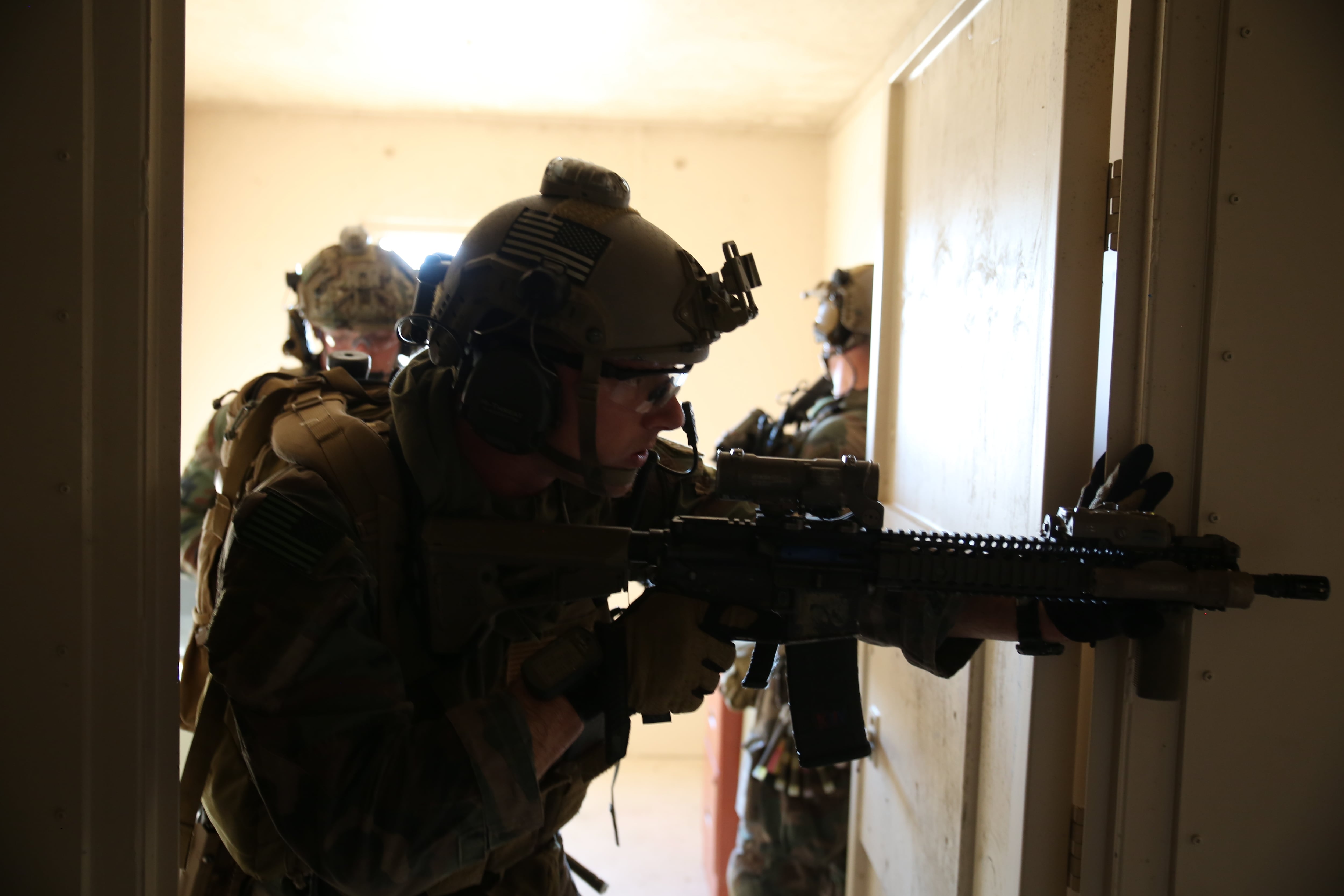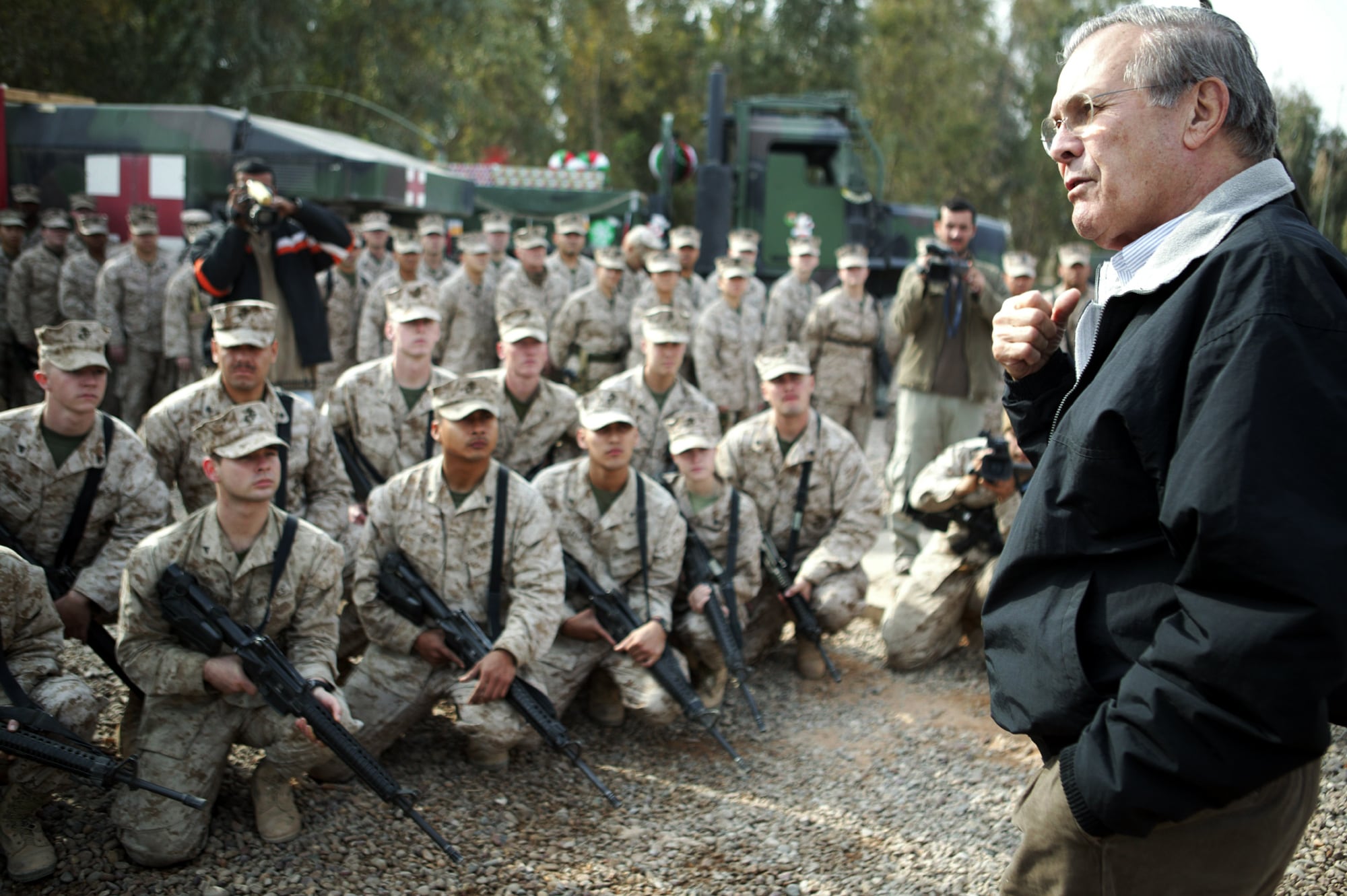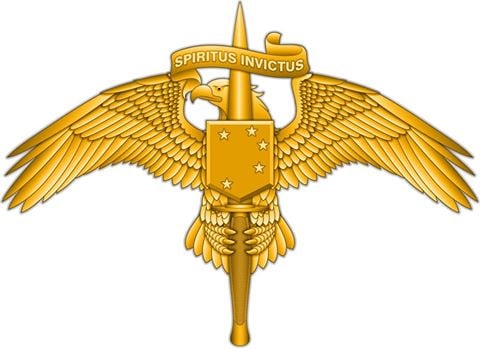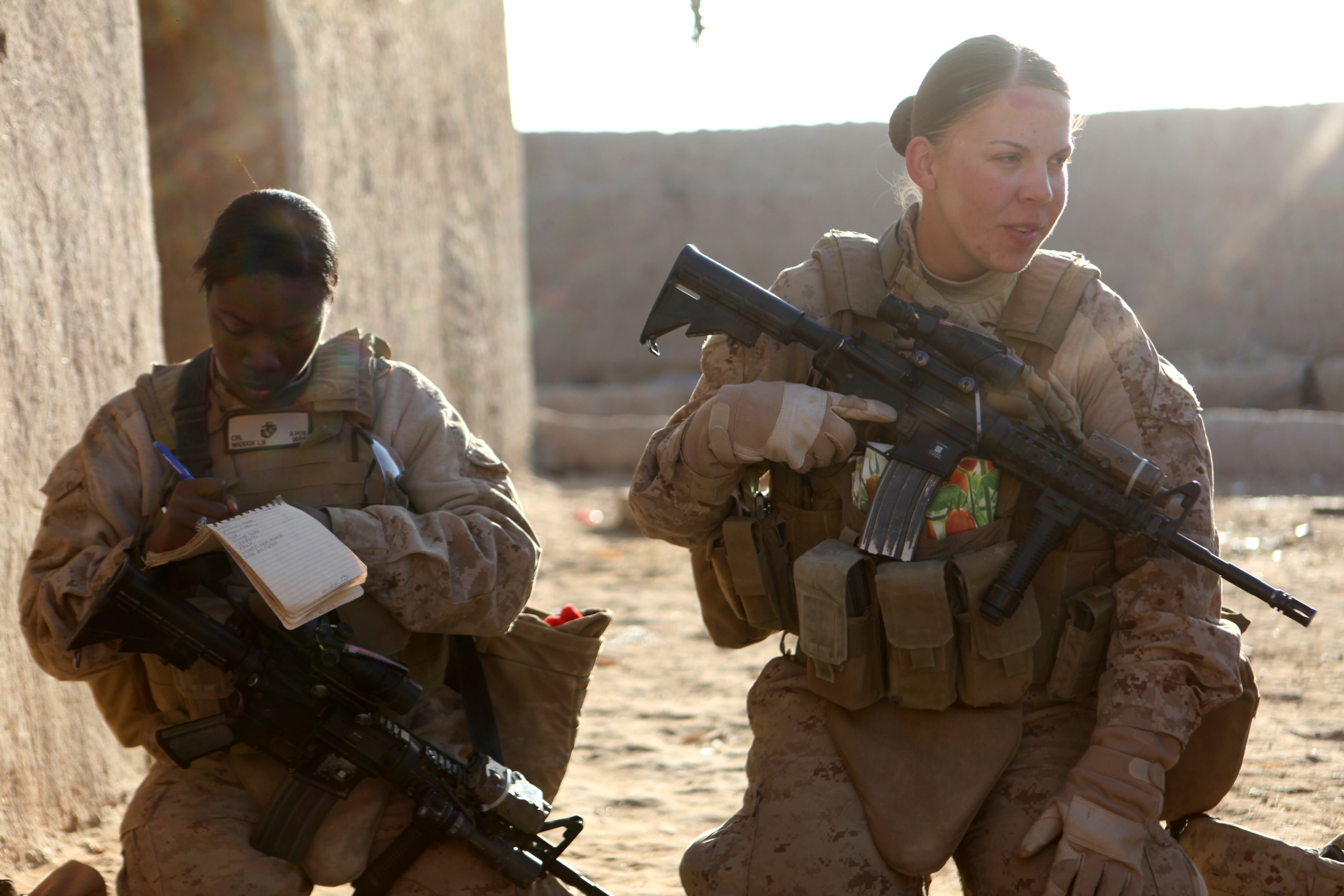Marine special operators will soon begin wearing a new insignia on their uniforms, similar to the pins and tabs worn by Navy SEALs and Army Special Forces troops.
Starting next month, Marine Raiders will be authorized to wear a gold breast pin on their uniforms. The 2-inch by 2.75-inch pin features a bald eagle with outstretched wings representing the Marine Corps; a dagger in the eagle's talons to symbolize Marine Raider battalions and the Marine Special Operations School; the Southern Cross, to represent Raiders' victories on Guadalcanal; and the Latin phrase "Spiritus Invictus:" which translates as ""unconquerable spirit."
The pin will be authorized for Marines in two military occupational specialties: 0372 critical skills operators and 0370 special operations officers.
Maj. Gen. Carl Mundy III, Marine Corps Forces Special Operations Command's commander, said in a Monday statement announcing the new insignia that MARSOC Marines learn how to think critically and fight in an increasingly complex and politically sensitive battle space. This pin represents their special training and abilities, he said.
"Our rigorous training pipeline ensures that a newly minted critical skills operator has developed the skills required for full spectrum special operations," Mundy said. "This badge serves as a visual certification that they have trained and prepared to accept their new responsibilities."

A critical skills operator with 2nd Marine Raider Battalion secures a hallway during a four-day training exercise in North Carolina. Marine Raiders will soon be authorized to wear a gold bald eagle pin on their uniforms.
Photo Credit: Marine Corps
Raiders spend at least 268 days in training, of which 196 days are spent at the Individual Training Course. In that course, Marine critical skills operators learn the skills they will need in the field, such as survival, evasion, resistance and escape; small unit tactics; close quarters battle and irregular warfare.
The first insignias will go to Marines who are slated to finish MARSOC's Individual Training Course on Sept. 28, said 1st Lt. Danielle Phillips, a Marine spokeswoman at the Pentagon. The timeline for sending the insignia to Raiders already in the fleet has not yet been determined since the insignia is not yet in mass production, she said.
Then-Maj. Gen. Joseph Osterman endorsed the insignia in October when he was MARSOC's commander, Phillips said. Osterman has since been promoted to lieutenant general and he is now deputy commander of U.S. Special Operations Command.
MARSOC's heritage traces back to World War II, when the first Raider battalions were activated in 1942 to conduct irregular warfare missions in the Pacific theater. The battalions were disbanded two years later when the Marine Corps decided it no longer needed to wage unconventional warfare.

Defense Secretary Donald Rumsfeld, seen here in Iraq, called for creation of a Marine Corps special operations force as part of a broader strategy to grow this capability throughout the U.S. military.
Photo Credit: K.T. Tran/Marine Corps.
After the war, reconnaissance Marines remained independent from other special operators until 2006, when then-Defense Secretary Donald Rumsfeld insisted that Marine commandos fall under the purview of Special Operations Command.
"It was an idea that was not popular with the Marine Corps among the senior leaders," Rumsfeld told Military Times in 2015. "That is not a surprise or unusual. It's true of a lot of things in the Defense Department because people get comfortable with what they're doing, and there's a logic to what they're doing, so as a result there's a resistance to change of any kind."
But Rumsfeld, never shy about knocking heads, overruled those who objected to the creation of MARSOC.
"I believed then, as I believe now, that special forces would have a growing role in U.S. national security affairs," Rumsfeld said. "The addition of the Marine Corps to that activity was one element of a broader approach. Exactly how they fit in, I assumed would evolve. I wasn't in a position to look at that from a micro standpoint. But from a macro standpoint, the Marines had significant capabilities, and it seemed to me that they would find a niche."




